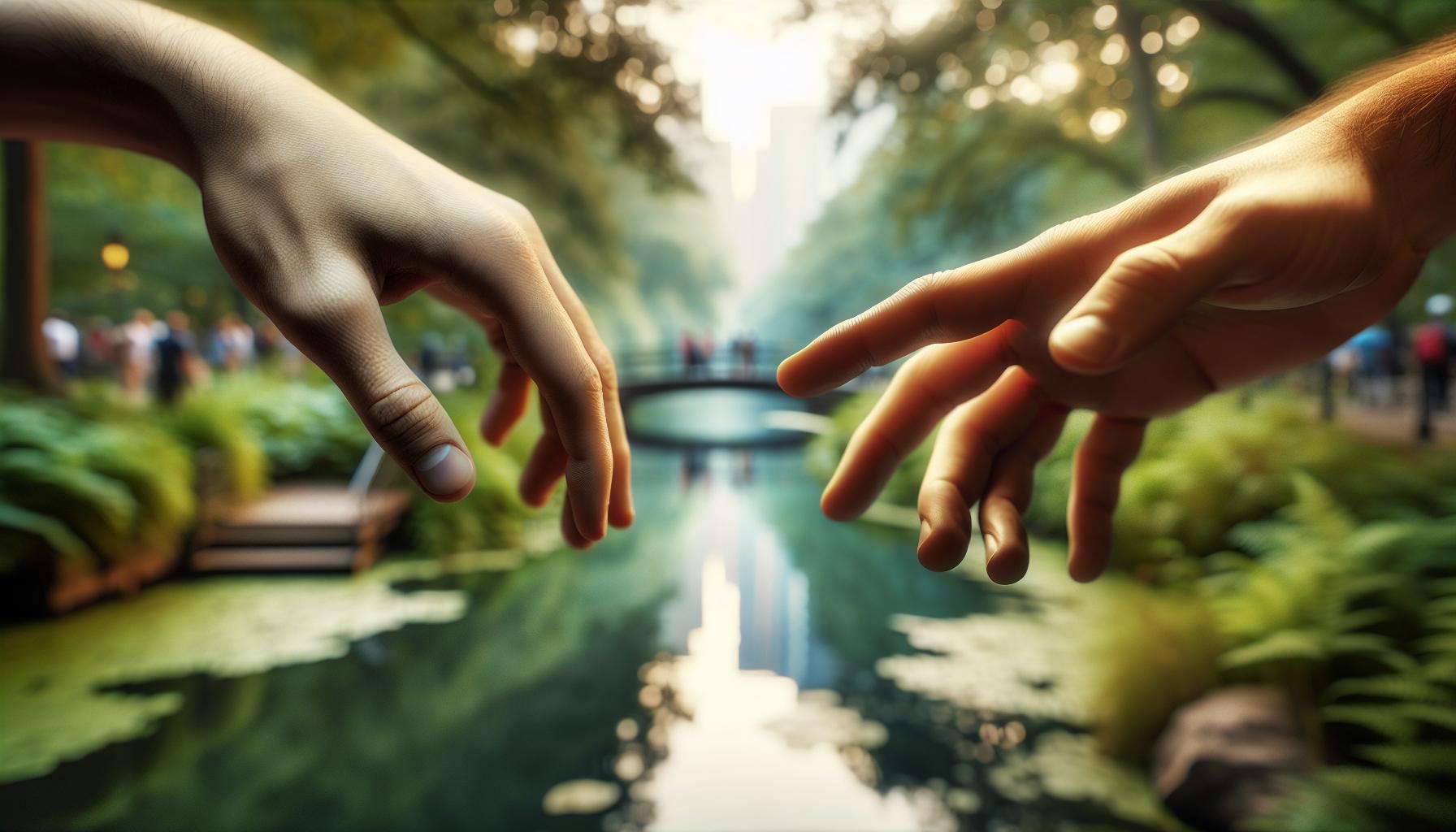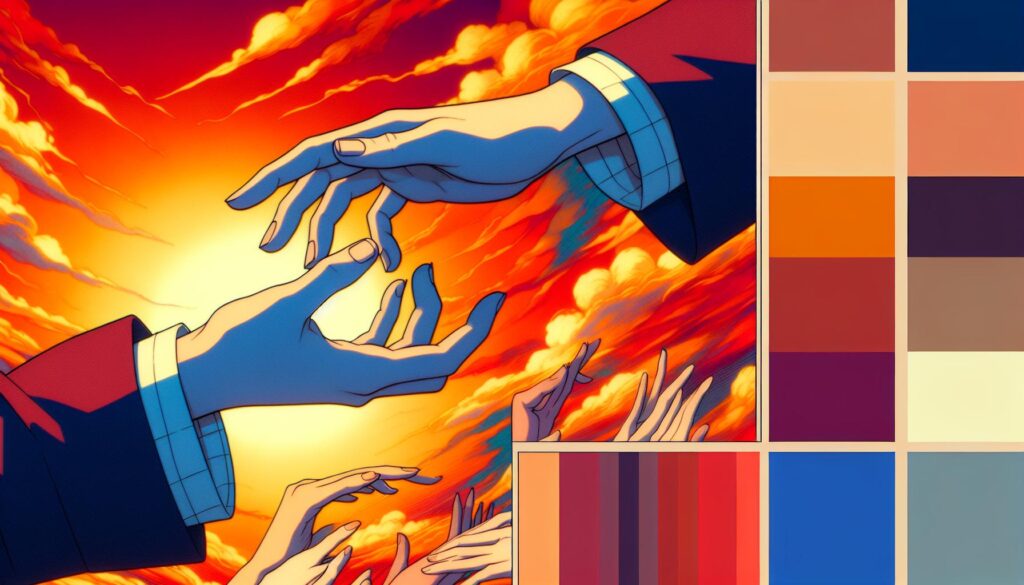Anime has a unique way of capturing emotions and storytelling, and one of the most intriguing aspects is how it portrays hands. Whether it’s a gentle touch, a fierce grip, or an intricate gesture, hands in anime often convey deeper meanings that words sometimes can’t express. I’ve always found it fascinating how these simple appendages can symbolize connection, power, or vulnerability.
In this article, I’ll explore the significance of hands in various anime series. From iconic scenes to subtle details, I’ll delve into how animators use hand movements to enhance character development and storytelling. Join me as we uncover the artistry behind this often-overlooked element in anime.
Key Takeaways
- Significant Emotional Expression: Hands in anime are powerful tools for conveying emotions, showcasing feelings like joy, anger, and vulnerability without words.
- Impact on Character Development: Subtle hand gestures reflect characters’ growth and relationships, with changes in positioning symbolizing trust and connection throughout their journeys.
- Artistic Representation: The design and movement of hands complement the overall animation style, with unique hand shapes reflecting personality traits and enhancing storytelling.
- Synergy with Music: The emotional depth of hand gestures is amplified through music and soundtracks, which align with visual cues to reinforce character emotions and narrative impact.
- Audience Engagement: Viewers respond profoundly to the expressive power of hands, recognizing their significance in expressing complex character dynamics and emotional connections.
- Overlooked Narrative Device: Hands serve as an essential yet often underestimated element in anime storytelling, providing a deeper layer of understanding and relatability for audiences.
Anime:tkbkxtc_prk= Hands
In anime, hands hold significant expressive power, directly influencing character emotions and narratives. Animators often use hand gestures to symbolize connection, conflict, and intimacy. Hands can illustrate emotions like joy, anger, or sadness without spoken words, enhancing storytelling.
Iconic scenes highlight the importance of hand movements. For instance, a gentle hand reaching out may signify support or love, while a clenched fist can illustrate determination or rage. These visual cues resonate deeply with viewers, making them impactful.
Subtle details also matter. Small gestures, like a character brushing their fingers against another’s, can evoke vulnerability. The positioning of hands during dialogue reveals underlying tensions or affections between characters, enriching interactions without requiring lengthy explanations.
Overall, hands in anime serve as a crucial tool for character development. By examining these intricate movements and gestures, I uncover layers of meaning and emotion that elevate storytelling to new heights.
Themes Explored in the Series

Hands play a pivotal role in exploring various themes within anime, particularly in character development and emotional impact. Their expressive nature often reveals deeper narratives and connections between characters.
Character Development
Hands communicate a character’s growth and relationships throughout the series. Subtle changes in hand positioning reflect shifts in character dynamics. For instance, a character’s gradual transition from closed fists to open palms signifies trust and vulnerability. Anime like Your Lie in April showcase this, where hands illustrate the protagonist’s emotional journey, as they move from isolation to connection through music. Furthermore, distinct hand gestures, such as a thumbs up or forward-leaning posture, often depict confidence or willingness to engage, highlighting how hands help define personalities and fosters audience empathy.
Emotional Impact
Hands evoke strong emotional responses, enhancing the storytelling experience. Scenes featuring gentle touches or interlocking fingers create an atmosphere of intimacy and connection. In Anohana: The Flower We Saw That Day, fleeting hand contact between characters encapsulates their shared past and unfulfilled emotions. Conversely, clenched fists or aggressive gestures can heighten tension and foreboding, making the stakes palpable. Animators expertly use these visual cues to express feelings that words alone might not convey, ensuring that viewers grasp the characters’ emotional depths with clarity and resonance.
Art and Animation Style

Hands in anime not only convey emotions but also reflect the overarching art and animation style. The unique visual elements combine to enhance storytelling, character development, and audience engagement.
Color Palette
Color palettes in anime significantly influence the emotional tone and atmosphere. Bright colors may evoke feelings of happiness and excitement, while darker shades can create a sense of tension or sadness. For instance, Your Lie in April utilizes warm hues during moments of joy and cooler tones for scenes depicting loss, thereby amplifying emotional resonance. Consistent color schemes across characters’ hand gestures and actions visually reinforce their emotional states, effectively guiding viewer interpretation of key moments.
Character Design
Character design in anime plays a critical role in how hands express emotions and narratives. Proportions, line art, and stylistic choices contribute to conveying personalities and emotions. Characters often possess unique hand shapes or styles that reflect their traits. For example, a character with slender, delicate fingers might indicate gracefulness or vulnerability, while a robust hand design may signify strength or assertiveness. Animators emphasize hand movements through exaggerated features, enhancing expressions of joy, anger, or tenderness. This strategic character design creates a deeper connection between the audience and the characters, facilitating emotional investment in the story.
Music and Soundtrack

Music and soundtrack significantly enhance the emotional depth of anime, often intertwining with visual storytelling. I notice how melodies accompany key moments, underscoring the expressive power of hands and their meanings in the narrative. Themes often evoke specific feelings, amplifying the impact of hand gestures and movements.
Composers use various techniques to complement visual expressions. For instance, a soft piano piece can elevate a gentle hand touch, while a dramatic orchestral swell may accompany a clenched fist. In series like Your Lie in April, the music mirrors character emotions, reinforcing the connection between sound and visual cues.
The choice of instruments also plays a role in defining character arcs. Strings often suggest warmth and vulnerability, while brass instruments may convey strength and determination. This utilizes sound to reflect changes in character dynamics as hands shift from expressions of conflict to connection.
Iconic tracks become synonymous with pivotal scenes. I recognize that certain songs trigger memories of specific moments, enhancing my emotional response. For example, in Anohana: The Flower We Saw That Day, the haunting melody during fleeting hand contact intensifies the sense of nostalgia and lost opportunities.
Overall, the synergy between music and visual storytelling in anime deepens audience engagement. I find that the soundtrack not only supports the narrative but also enriches the understanding of characters and their relationships, creating a more immersive viewing experience.
Audience Reception
Audience reception of hands in anime demonstrates their powerful impact on storytelling and emotional engagement. Viewers often respond to precise hand gestures, recognizing their significance beyond mere visuals. For instance, scenes showcasing gentle hand movements frequently evoke feelings of warmth and connection, highlighting the ability of hands to convey deep emotions.
Studies reveal that fans appreciate how hands illustrate character relationships and dynamics. A soft touch or clasped hands may symbolize reassurance or intimacy, while a forceful hand gesture can indicate heightened tension or determination. From Your Lie in April to Anohana: The Flower We Saw That Day, audiences feel a strong attachment to characters based on these subtle yet poignant depictions.
Moreover, feedback from fans shows an increased awareness of the artistry behind hand animations. Many viewers express admiration for the detailed expressions crafted through hand movements. Whether it’s the rhythm of fingers dancing over piano keys or the tension in a clenched fist, these expressions enrich the viewing experience, making it more relatable and immersive.
The overarching impression is that hands serve as a unique narrative device within anime. Their ability to convey unspoken emotions resonates deeply with audiences. This emotional resonance not only enhances character connections but also prompts viewers to reflect on their own experiences, transforming passive viewing into an active emotional journey.
Character Interactions
Hands in anime are more than just appendages; they’re powerful tools of expression that enhance storytelling. I’ve seen firsthand how a simple gesture can convey a character’s inner turmoil or joy without a single word being spoken. The artistry behind hand movements adds depth to character interactions and emotional arcs, making the viewing experience more immersive.
As I reflect on my favorite anime moments, it’s clear that the subtlety of hand gestures often resonates deeply with viewers. Whether it’s a gentle touch or a clenched fist, these actions reveal layers of meaning that elevate the narrative. The combination of visuals and music further amplifies this emotional impact, creating a rich tapestry of storytelling that stays with us long after the credits roll.
